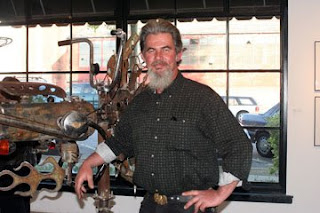 Eyvind Earle is one of my favorite painters. Or I guess maybe he could be considered more of an illustrator.
Eyvind Earle is one of my favorite painters. Or I guess maybe he could be considered more of an illustrator.Earle was born in 1916 and traveled extensively as a young man, painting and showing his art wherever he went.
In 1939 he started his own Christmas card company, designing and screenprinting his own work. I have a HUGE book of this art and it is mesmerizing! He did a lot of commercial work during the 30s through the 60s. He even created an animated trailer for West Side Story. Earle worked for Disney Studios starting in the 1950s but kept on doing his own artwork too.
 In 1988 Eyvind Earle moved to Carmel, a small city on California's mid-coast and his paintings reflect his surroundings in a uniquely sensual yet organized vocabulary.
In 1988 Eyvind Earle moved to Carmel, a small city on California's mid-coast and his paintings reflect his surroundings in a uniquely sensual yet organized vocabulary.  If you've ever been to California, especially around Monterey, Carmel and Big Sur, his paintings capture the grandeur and fore-shortened vistas perfectly. And there is always a touch of humor in them too.
If you've ever been to California, especially around Monterey, Carmel and Big Sur, his paintings capture the grandeur and fore-shortened vistas perfectly. And there is always a touch of humor in them too. Earle died in July, 2000. To learn more about him and to see more of his work, go to the Gallery 21 website. His work is breathtaking.















































